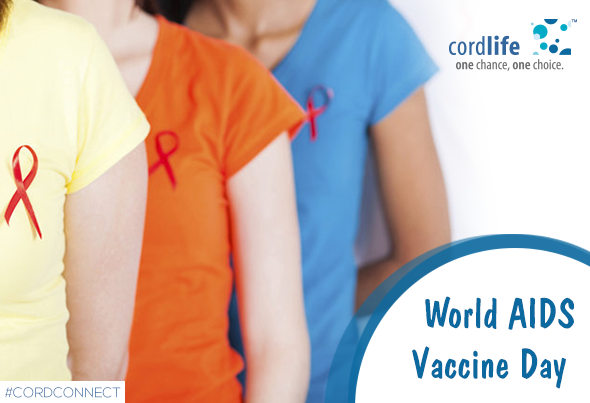Table of Contents
A look at World AIDS Vaccine Day and the promise that stem cells hold in treating AIDS.
Today is May 18, observed all over the world as World AIDS Vaccine Day. It is also known as HIV Vaccine Awareness Day, and it reiterates the need to find a lasting cure for the dreaded virus so that the HIV infection may be eliminated altogether. The day marks the continued contributions of doctors, health professionals and researchers all over the world who are involved in looking for a vaccine to rid the human race of the AIDS epidemic for the last several years and who will continue to do so in the years to come.
The day was chosen in response to a speech made on May 1, 1997 by the then US President Bill Clinton, who spoke about the need for an ‘AIDS vaccine’ at a commencement speech at Morgan State University. In his speech, President Clinton had urged the medical community and corporations invested in health care to merge the best in science and technology to develop an effective AIDS vaccine in the next decade. Accordingly, the first World AIDS Vaccine Day was observed on May 18, 1998.[1] This tradition continues to this day, with organisations involved in AIDS care, medical professionals and communities coming together to debate and discuss ongoing technologies and new medical breakthroughs in curing AIDS.
On this momentous occasion today, it is time to take stock of the progress modern medicine has made in seeking and enforcing an AIDS vaccine. There have already been several clinical trials launched all across the world to study the nature of HIV and the many allied – and potentially fatal – disorders that occur in those suffering from AIDS. An extremely promising trial in the year 2009 actually proved that a vaccine that reduces the risk of HIV infection may indeed be possible using novel approaches such as using antibodies to neutralise a wide range of HIV strains.[2]
Are Stem Cells Beneficial in Curing AIDS?
While efforts to find such an AIDS vaccine are ongoing for years now, newer frontiers are being explored in the area of stem cells in effecting a cure for HIV and AIDS infections. Two noted studies in this connection – both conducted in the US and tabulated in 2015 – show promise by approaching the issue from two perspectives in stem cell treatment.
The first technique, developed by scientists at the UCLA Centre of Regenerative Medicine and Stem Cell Research, works on the premise that the regenerative nature of haematopoietic stem cells may help the compromised immune system to generate sufficient immunity to fight the virus. Since the HIV is a rapidly mutating virus that cannot be controlled by the normal responses of white blood cells in the human body, the scientists engineered a Chimeric Antigen Receptor (CAR) to be ‘carried’ by infection-fighting T cells so that they may find and destroy the cells infected by HIV. The team was successfully able to prove that the CAR-carrying haematopoietic stem cells regenerated into T cells that killed the HIV virus up to a significant 85%.[3]
Haematopoietic stem cells (HSCs) also form the basis for the second largely lauded clinical trial that also uses engineered stem cells to suppress the HIV infection. This trial used HSCs to study their application in treating lymphoma, which kills a large number of people detected with AIDS. The premise of the trial rested on the efficacy of blood-forming HSCs to help control both HIV and the spread of lymphoma in AIDS patients. Patients requiring stem cell transplants to control the lymphoma would be injected with HSCs engineered to increase the body’s fighting response to antigens in an already compromised immune system. After the transplant, the HSCs would help in the creation of new disease-fighting cells. This would help in reducing the viral load of the disease and eliminate the need for other associated treatments such as radiation and chemotherapy.[4]
The most ambitious trial in this connection commenced in Spain late in 2015, with the National Organisation of Transplants announcing its plans to cure five HIV patients within three years of umbilical cord blood transplants. The trial selected 157 donors with a specific gene mutation that helped them resist HIV. The trial will map the progress of the patients who will receive umbilical cord blood transplants to test the application of stem cells in combating the spread of disease in HIV patients suffering from lymphoma or leukaemia.[5]
[1] https://anydayguide.com/calendar/1994
[2] http://www.avac.org/prevention-option/aids-vaccines
[3] http://newsroom.ucla.edu/releases/stem-cell-gene-therapy-developed-at-ucla-holds-promise-for-eliminating-hiv-infection
[4] http://www.hivequal.org/hiv-equal-online/stem-cell-research-on-functional-hiv-cure-advances-to-human-trials
[5] http://www.ndtv.com/health/first-trial-to-use-umbilical-cord-stem-cells-to-cure-hiv-1236452
